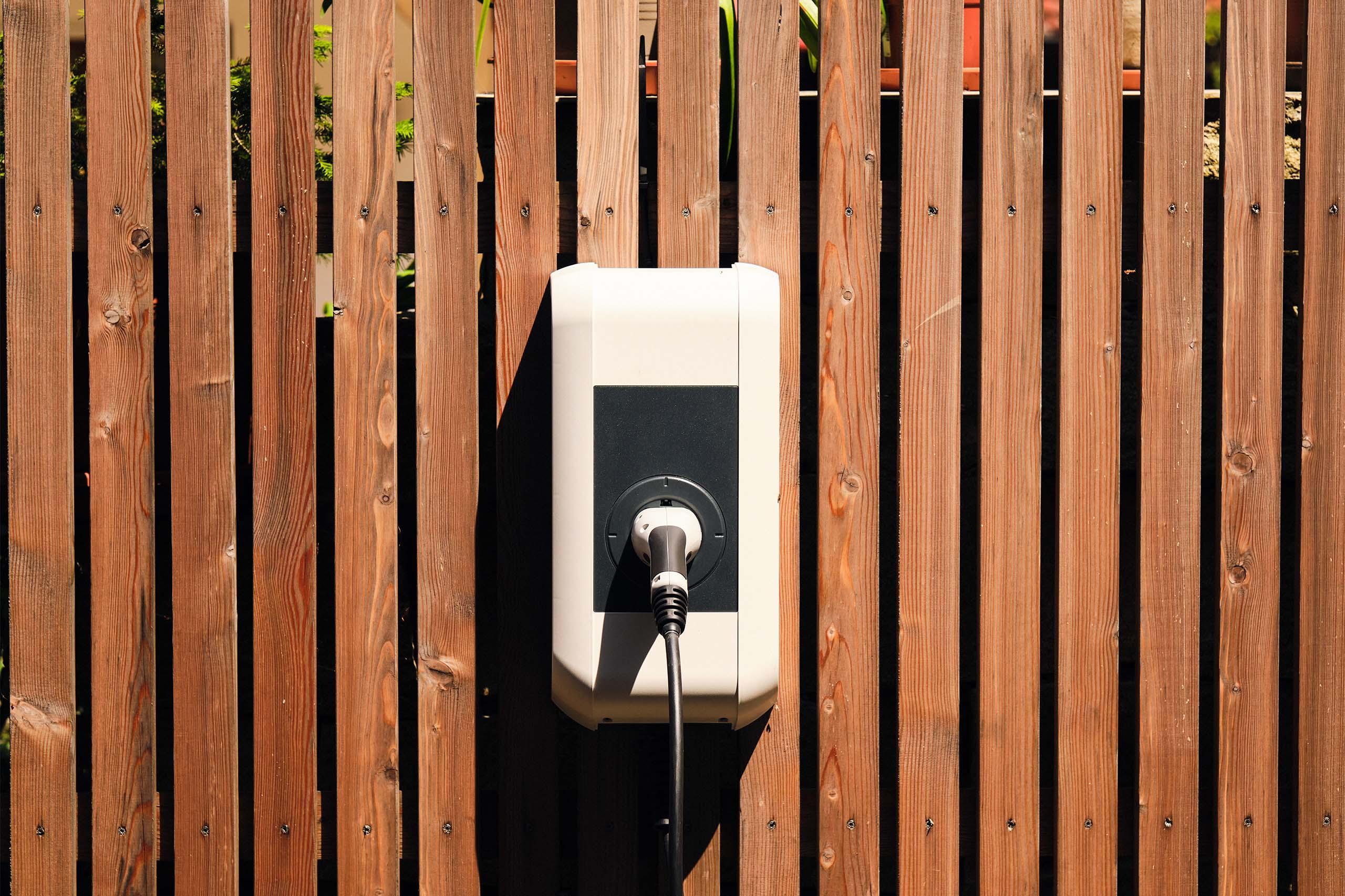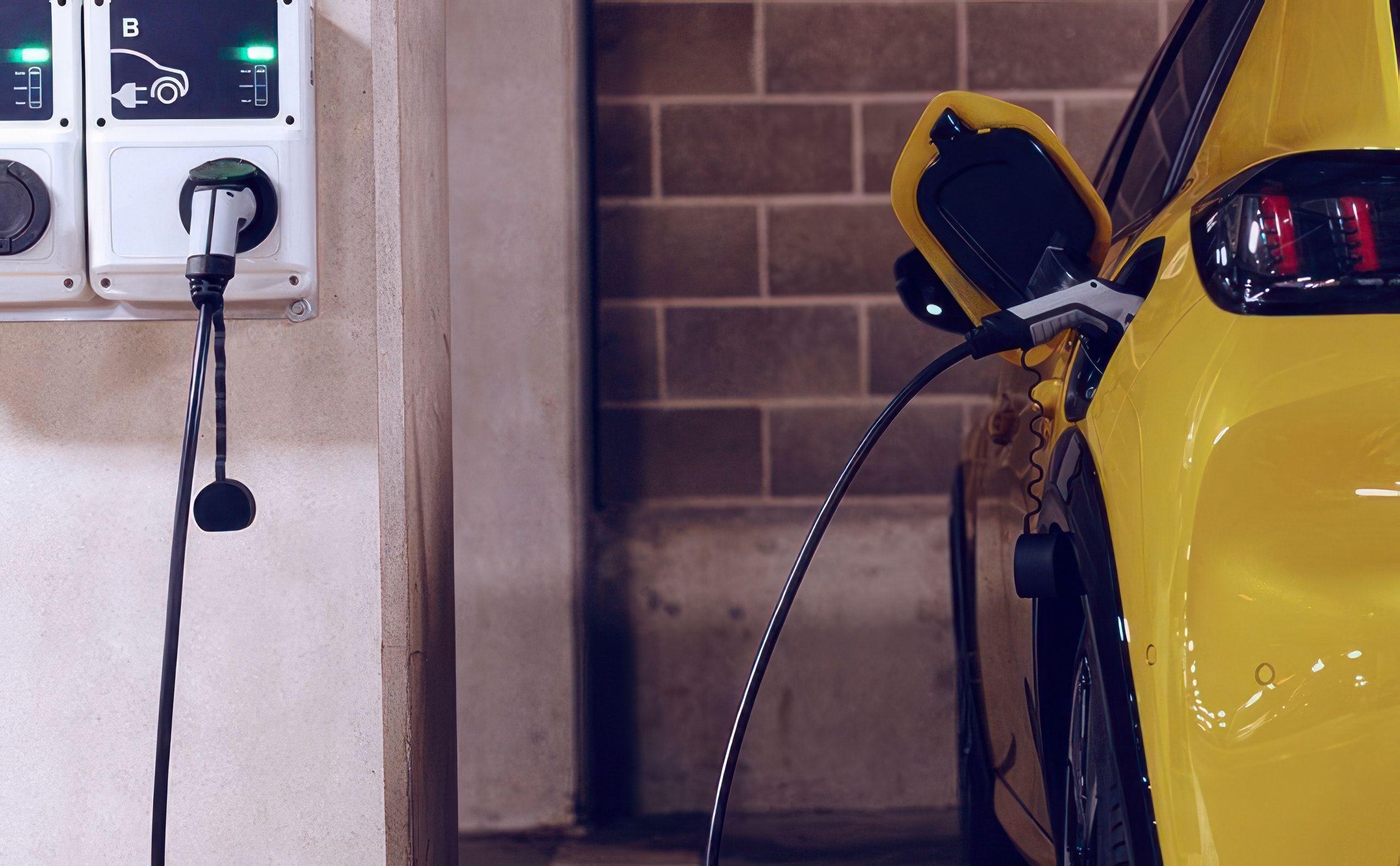You come home, plug your electric car into the domestic socket with the appropriate Mode 2 charging cable, charge it overnight and get into a fully charged electric car the next day. This is the daily scenario of electric car owners who do not charge their cars at a charging station. But what happens with your home installation if your domestic socket bears the charging burden of your electric car for 10 hours or more?
More safety: Wallbox & electric car as a dream team
Domestic earthed sockets are not designed for the high continuous load that charging an electric car entails. In some tests, household sockets with an electric car connected reached a temperature of over 80 degrees Celsius within just 15 minutes. In the worst-case scenario, the supply line will burn out and can cause a fire.
You can compare the charging power of a Nissan Leaf Mode 2 cable at the household socket (2.3 kW) with the power of a kettle, for example. To fully charge the battery of the Nissan Leaf (24 kWh), you need about 10 hours at the household socket. This is equivalent to a kettle running for over 10 hours. Would you do that to the household outlet?
If you want to be on the safe side, a wallbox is the best choice. The wallbox can be configured so that the charging power is perfectly matched to the car.

Shorter charging time at the wallbox
Current electric car models easily achieve ranges of more than 400 kilometers. However, they also have correspondingly large batteries on board: 60 kWh and more. Since charging at a household outlet should be done at a maximum of 2.3 kW for safety reasons, these charging processes take a very long time. If you connect an empty 60 kWh battery to an earthed socket, you have to wait around 25 hours until it is fully charged again.
With a wallbox, you're back on the road much faster: even with a medium-fast charging power of 11 kW, the 60 kWh battery would be fully charged again in less than six hours - that is, overnight or during a normal workday. With the 22 kW top models, charging such a battery even takes less than three hours.
More efficiency instead of charging losses
During charging, some energy is always lost as heat due to the electrical resistance in the cables and converters. It is therefore not possible to completely avoid charging losses in electric cars. The main factors influencing this small loss are cable diameter and length, as well as charging power and time.
If you charge your electric car via a household cable, however, significantly more losses occur. The reason for this is that the on-board charger, which is permanently installed in the electric car, only achieves its optimum efficiency at high charging power. The higher the charging power, the shorter the charging process and thus also the time during which charging losses occur.
In the case of the smart EQ, the manufacturer Mercedes-Benz reports different power consumption levels for different charging scenarios. If the smart EQ charges at a wallbox, it covers a distance of 100 kilometers with 12.9 kWh. If it is charged at a household socket, it needs 18 kWh for 100 kilometers. This is due to the poorer efficiency of the on-board charger.
The difference of 5 kWh costs money in the long run: At the usual electricity prices, the Schuko charger pays a good 2 euros more for 100 kilometers of driving. Anyone who drives their smart EQ 10,000 kilometers a year will therefore have to pay around 200 euros more on their electricity bill than someone with a wallbox in their garage.
Fabulous features: additional functions, please!
If you want to use one of the many additional functions, you can't get around a wallbox. A smart charging station...
- offers control and statistics functions
- enables the convenient use of a favorable night-time electricity tariff or
- the efficient integration of a solar system or battery storage.
In addition, some features, such as user registration via RFID or a permanently installed cable, significantly increase convenience when charging. Many wallboxes have essential safety features such as fuses and residual current sensors permanently installed.
